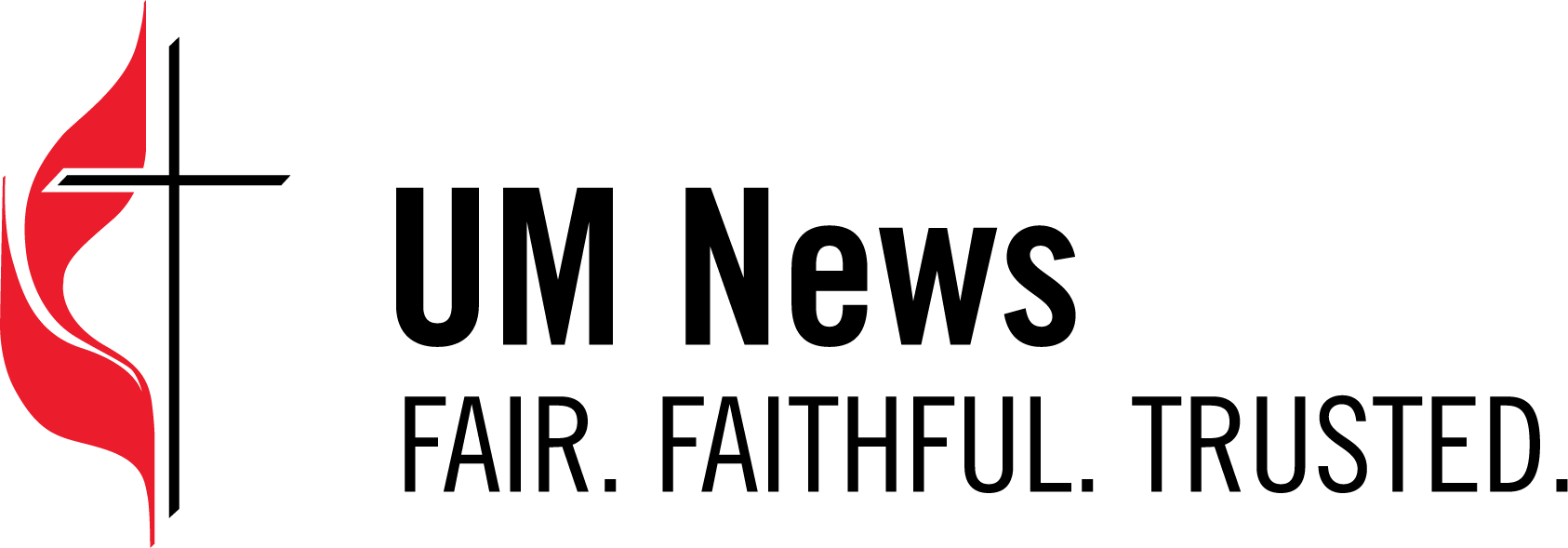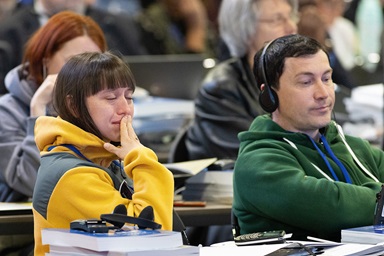Key points:
- Even as they vote to disaffiliate from The United Methodist Church, some congregations and conferences show interest in maintaining some connectionalism with The United Methodist Church.
- Three different paths to separation in Europe have created three different trajectories in terms of future connectionalism (relational and organizational).
- In most cases, the denomination’s future in the United States is not yet entirely clear or cannot yet be fully anticipated.


Photo © Hector Amador.
Commentaries
In a recent commentary, I noted that connectionalism has organizational, relational and theological dimensions. I pointed out that the current wave of separations from The United Methodist Church raises questions about the possibilities of ongoing connectionalism among the congregations and conferences that have historically made up the denomination.
In this commentary, I will emphasize that the question of future connectionalism depends not only on the type of connectionalism — organizational, relational or theological — but also on how that process of separation looks.
Separation plays out in different ways, and differing trajectories have big implications for future connectionalism. Recent examples from Europe and the United States help illustrate.
Europe
In mid-March, the Northern Europe and Eurasia Central Conference held a special session. One purpose was to act on proposals by the Eurasia Episcopal Area and the Estonia District of the Estonia Annual Conference to separate from The United Methodist Church. However, the two separations are playing out differently from each other, as are the separations of Bulgaria and the Slovak Republic of the Central and Southern Europe Central Conference.
Last year, branches of The United Methodist Church in Bulgaria and the Slovak Republic decided unilaterally to exit the church immediately and to join the Global Methodist Church. (Romania voted with the rest of the Bulgaria-Romania Provisional Annual Conference to leave The United Methodist Church but has not yet done so.) Bishop Patrick Streiff ruled that in so doing, the Bulgaria-Romania Provisional Annual Conference violated church law, a view shared by some Judicial Council members.
Regardless of the legality under church law, the separations occurred, and the church in both countries joined the Global Methodist Church. This has, at least for now, completely ended formal, organizational connectionalism between The United Methodist Church and Methodists in Bulgaria and the Slovak Republic and effectively terminated most relational connections as well.
Last summer, Estonia also voted to withdraw from The United Methodist Church. Estonian Methodists, however, opted not to leave immediately but, rather, to give themselves a year to negotiate with Bishop Christian Alsted and the Northern Europe and Eurasia Central Conference to create a departure process. Moreover, they intend to become autonomous rather than to join the Global Methodist Church.
The result of that year of negotiation was a formal motion adopted by the central conference to approve Estonian separation. The motion requires the Estonian church and The United Methodist Church to work together on various transitional aspects and includes an “agreement of mutual respectful relationships for the future.”
Thus, the agreement seeks to preserve some degree of relational connectionalism, even as organizational connectionalism shifts. It is unclear if any organizational connectionalism will continue after the short-term cooperation around the separation process, especially since the path Estonia is taking is not formally recognized by worldwide United Methodist polity.
The annual conferences of the Eurasia Episcopal Area voted last December to seek to become an autonomous church by following Paragraph 572 of the Book of Discipline, the official pathway laid out for church branches outside the United States to depart from the denomination.
While Bulgaria and the Slovak Republic’s decision was immediate, the Eurasian process will be slow. Paragraph 572 requires signoff by the annual conferences involved, the central conference, the Standing Committee on Central Conference Matters and the General Conference. The Eurasian Episcopal Area’s decision to select this more onerous process may, ultimately, have more to do with features of Russian law than with church politics.
Nevertheless, this path leaves more options open for future connections. The Eurasian request currently seeks autonomy but not future affiliation with The United Methodist Church (“autonomous” and “autonomous affiliated” being separate categories in United Methodist polity). Moreover, in their resolutions for autonomy, two of the four Russian annual conferences mention “possible affiliation with a new Methodist denomination,” presumably the Global Methodist Church. If the Eurasia Episcopal Area joins the GMC, that step would probably foreclose any future connectionalism with The United Methodist Church. If they remain autonomous, however, going through a by-the-rules separation process would facilitate ongoing relational connections with those who remain in the denomination.
Thus, three different paths to separation in Europe have created three different trajectories in terms of future connectionalism (relational and organizational) with The United Methodist Church.
United States
In the United States as well, different trajectories toward separation from the denomination produce different implications for the future of connections between churches, whether leaving or staying. While separations or disaffiliations have been governed in the United States by Paragraph 2553, approaches by annual conferences and churches leaving the denomination have ranged between cooperative and antagonistic. In some instances, the conflict has escalated to lawsuits by churches seeking to leave. In other instances, charges and countercharges of misrepresentation and manipulation have resulted.
Subscribe to our
e-newsletter
Such acrimony makes a Michigan congregation’s recent decision to separate all the more interesting. Cornerstone United Methodist Church, the church with the largest attendance in the Michigan Annual Conference, recently voted to disaffiliate and become nondenominational.
One might assume that opting to become nondenominational means rejecting connectionalism, but the Rev. Ken Nash, Cornerstone’s pastor, said, “We like being networked and connected. We love the idea of connectionalism.” While this statement might seem surprising, Nash continued, “We want to have connection in the future. It just doesn’t have to be as formalized.”
In other words, Cornerstone wants connectionalism that is more relational and less organizational. Cornerstone’s hope to maintain such connectionalism with The United Methodist Church is further evidenced by their intention to work with the annual conference to help provide for members who wish to remain United Methodist and their intention to continue supporting La Nueva Esperanza United Methodist Church in Grand Rapids. But this move would also allow them to “be in relationship with other denominations,” as the Michigan Conference article announcing the change said.
Cornerstone United Methodist Church is certainly an exceptional case among disaffiliating U.S. churches because of the degree to which they seem intentional about maintaining a connection to The United Methodist Church. And it matters that they are becoming nondenominational rather than joining the Global Methodist Church.
Across the United States, disaffiliating churches are opting for a variety of post-UMC futures by joining the Global Methodist Church or other denominations such as the Free Methodist Church or by becoming independent and experimenting with other new denominational or connectional forms.
Therefore, as with different national branches of Methodism in Europe, congregations in the United States have approached the process of separation and the anticipated denominational status of separating church in various ways. These different approaches set up different trajectories toward varying levels and forms of ongoing connectionalism (or not).
The question, “In what way, if any, will those departing The United Methodist Church and those staying be in connection?” does not have an answer. It is a question with dozens, even thousands, of answers as different congregations, groups of congregations and United Methodist conferences around the world decide how separation will occur and what will follow it.
The denomination’s future in the United States is not yet entirely clear and cannot yet be fully anticipated. While it is easy for Americans to point to the reunification of the Methodist Episcopal, Methodist Episcopal South and Methodist Protestant churches, we can find only one example of separated churches reuniting.
Relationships between The United Methodist Church and African American Methodist denominations have warmed since their separation. Relationships between United Methodists and autonomous churches have, in most cases, cooled, and relationships between The United Methodist Church and most holiness denominations have remained distant. None of these churches have reunited. Moreover, in none of these instances could those present at the time of separation anticipate what the separating groups’ relationships would be like decades down the road.
However organizational separation happens. Because — or in spite — of organizational arrangements adopted afterward, separation takes an emotional and relational toll.
Even in the case of Cornerstone United Methodist Church in Michigan or Estonia in Europe, those participating in relatively collaborative approaches to separation still speak of the pain involved. But organizational decisions have the potential to increase or decrease the relational toll.
While the size of that toll does not necessarily determine how connectionalism among Methodists will look in future decades, it does matter, at least in the short term, as people decide if and how to continue relating to one another.
Scott is the director of mission theology in the Office of the General Secretary at United Methodist Global Ministries.
News media contact: Tim Tanton or Joey Butler, Nashville, Tennessee, (615) 742-5470 or newsdesk@umcom.org. To read more United Methodist news, subscribe to the free Daily or Weekly Digests.
Like what you're reading? Support the ministry of UM News! Your support ensures the latest denominational news, dynamic stories and informative articles will continue to connect our global community. Make a tax-deductible donation at ResourceUMC.org/GiveUMCom.



